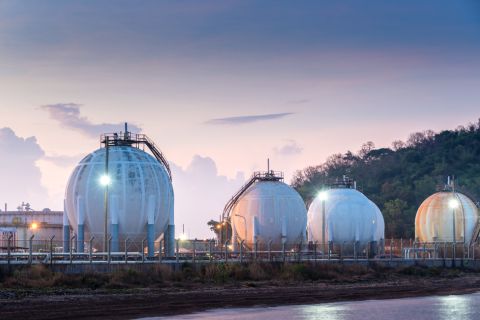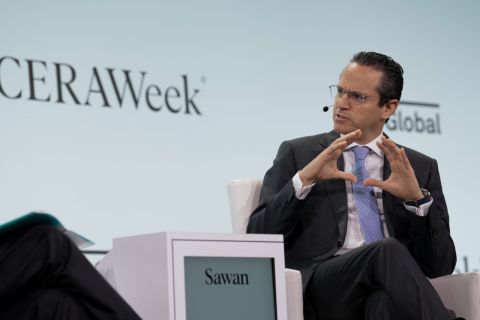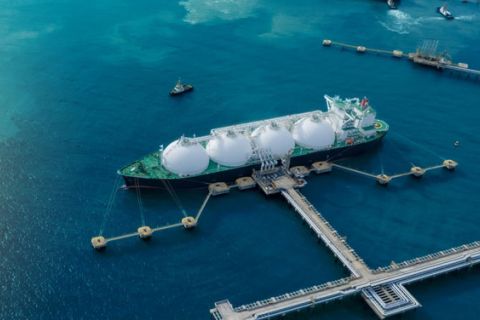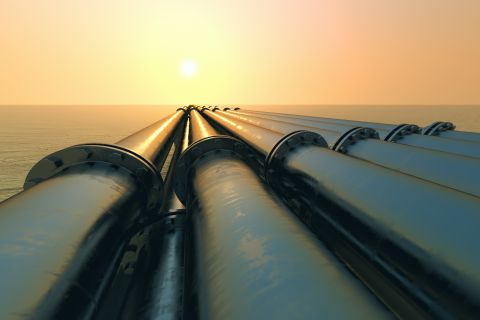Jordan Blum, editorial director, Hart Energy: We are here at CERAWeek in Houston, and I'm joined by Svante President and CEO Claude Letourneau. Thank you so much for joining us. Really appreciate it. So we're talking a lot about carbon capture, what you all do, just industry-wide with this conference. There's a lot of focus with you all on source emitter carbon capture. It used to be more cost prohibitive. I wanted to get your take on just what you all are doing and how that's changed a lot in recent years.
Claude Letourneau, Svante president and CEO: Well, CO2 is a waste material, so I think we all need to get to accept the fact that it's like rubbish, yes? So somebody picks up your rubbish at home, they landfill. You don't know how many tons they collect every year. You don't even know the price of it. It's about 0.7 ton and it's about $1,500 that it's costing you for somebody to manage your rubbish. So we all emit about 10 tons of CO2 collectively per capita and at a hundred dollars per ton, that's a thousand dollars. It's the same as your rubbish. So is it too expensive? The answer is no. But when you've been throwing it in an open air for the last 125 years, any dollar more is just more expensive. But we're starting now to realize that the consequences of having done this for 125 years is now as a price higher than the a hundred dollars per ton. So I think people are starting to get accepting this thing and then that's what we need to do with them. The biggest problem to developing the market is the monetization of CO2. So we get people in the mindset of it's going to cost a hundred dollars per ton to manage the CO2.
JB: So, obviously, there's some federal support, IRA [Inflation Reduction Act], things like that. Can I get you to talk a little bit of just how you see that timeline playing out when you talk about the monetization aspect?
CL: Yeah, absolutely. So there is a pathway to a sustainable industry, yes? And the sustainable industry ends up with every product you buy as a carbon intensity, and then everyone in the supply chain is dealing with their CO2 emission in the industrial sector and you end up paying for the CO2, but by piecemeal as you take raw material to a finished product. Yes. So today we need to get our heads around the management of this. So government, what they're trying to do now is de-risk the industry by providing an incentive, a carrot if you wish, for the industry to start interacting in a business-to-business mode. But right now it's a business-to-government [model] where the money being given by government is temporary. It's for a short amount of time, and it's for a small number of plants. Let's say the number that have been thrown out is about 100 million tons of CO2 from almost zero today. So that's 100 plant of a million that needs to be built. It's quite significant. But the de-risking of building a supply of a capture plan, building a pipeline, building a storage site is what the money is for from government.
JB: So yeah, in that vein, how important is the scaling up? Because there is a lot needed, like you said, with pipelines, storage hubs, et cetera.
CL: Well, just to give you an idea about the scale of things. So we emit 40 gigaton as mankind. Yes. Half of it is dealt by nature already with trees and ocean dealing with. So there's about 20 gigaton that goes in the atmosphere every year. So if we can get to 10 gigaton, bend the curve, yes, to 10 gigaton, that's 10,000 plant of 1 million tons. There is 40 plants today of 1 million ton. We need to go from 40 to 10,000 in less than 30 years. It's every week from now on, we need to commission a carbon capture plant, two a week. So that's the size of the scale. So if you understand how you want to go and you end up scaling this industry, you organize yourself with proper partnership to develop the supply chain to develop these plants. And that's what we're doing as a company.
JB: So how close will we come to making that a reality?
CL: Well, there is, first of all, I think after COP28, people realized that unabated fossil fuel basically can be acceptable for society. But if you don't abate your fossil fuel, then you're going to disappear as a product. So unabated means you need to abate and abate means carbon capture. But the narrative needs to shift a bit from the energy transition, which is about making electrons primarily to the industrial transition, which is about making product. Everything we have around us has a carbon source. Plastic and cement and steel. So it emits CO2 in the process. It has nothing to do with making electrons. So if you manage the CO2 emitted by the industrial sector, we call this carbon management, then this is how you get to getting traction in the marketplace.
JB: Very good. Well, let me ask you too about the company's specific technologies. That's the, let me get this right: Solid sorbent carbon capture technology and the Svante carbon capture ecosystem.
CL: Yes. So our technology is quite different than the technology being used for the last 50 years by the oil and gas industry to capture the CO2 from extracting methane. So the genesis of carbon capture is when you have raw methane coming out, if you want to sell pipeline grade natural gas for consumption, you need to remove the CO2 that's coming from the ground. So that's where the genesis, and it's a gas-to-liquid technology to do these things. We took an approach totally different coming from the tech industry, which is a solid state. It's a solid sorbent, and then it's a filter basically that collects the CO2. So that's the second generation technology. There's a third one that people are looking at, which is cryogenic. But the solid sorbent, we're the only one in the world making this technology available for CO2 capture.
JB: And is there a lot of buy-in you see occurring right now?
CL: Yeah, I think we see good traction. People are starting to understand the benefit of using this. It's more environmentally sustainable in the way to use it. These things, the lifetime of these filter is about three or five years instead of a less solvent, but you have to refurbish every month or every week or so because of degradation. So I think people are starting to see the benefit of solid sorbent.
JB: And we're talking about too, about having more modular compact, transportable?
CL: Yes. And we can push the manufacturing of the filter into a factory as opposed to buying chemicals and mixing it and delivering to a construction site. So the learning curve, it's a bit like batteries, basically. We make tin film, we cut them, we stack them, and then so there's a learning curve of doing this thing into a factory mode that will reduce the cost over time as well.
JB: Basically about making it as easy as possible for the emitters?
CL: Absolutely. That's the idea. We need to remove the friction in the marketplace. Yes.
JB: Very good. Well, no, thank you so much for being here with us at CERAWeek.
CL: Pleasure.
JB: We appreciate it.
CL: Thank you.
JB: Thank you. To read and watch more, please visit online at hartenergy.com.
Recommended Reading
US Expected to Supply 30% of LNG Demand by 2030
2024-02-23 - Shell expects the U.S. to meet around 30% of total global LNG demand by 2030, although reliance on four key basins could create midstream constraints, the energy giant revealed in its “Shell LNG Outlook 2024.”
CERAWeek: LNG to Play Critical Role in Shell's Future, CEO Says
2024-03-19 - Sawan said LNG will continue to play a critical role adding that LNG currently makes up around 13% of gas sales but was expected to grow to around 20% in the coming 15 to 20 years.
Antero Poised to Benefit from Second Wave of LNG
2024-02-20 - Despite the U.S. Department of Energy’s recent pause on LNG export permits, Antero foresees LNG market growth for the rest of the decade—and plans to deliver.
Midstream Builds in a Bearish Market
2024-03-11 - Midstream companies are sticking to long term plans for an expanded customer base, despite low gas prices, high storage levels and an uncertain political LNG future.
Texas LNG Export Plant Signs Additional Offtake Deal With EQT
2024-04-23 - Glenfarne Group LLC's proposed Texas LNG export plant in Brownsville has signed an additional tolling agreement with EQT Corp. to provide natural gas liquefaction services of an additional 1.5 mtpa over 20 years.




